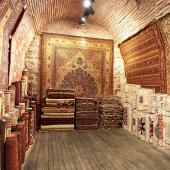Jewellery Art
The most native of all human jewelry forms were shells. Already 100,000 years ago, researchers estimate, people adorned themselves with shells. In the Stone Age people also processed snail shells, animal teeth, fish vertebrae, pearls and amber to pendants or chains to represent their tribe and to grace themselves for their fellow human beings.
Whether chains, belts, rings, pendants or watches - there are no limits for jewelry design. With the discovery of processing capacities for copper, bronze, gold and iron in particular spiral rolls, tiles, metal beads, rings and washers were developed to gleaming ornate jewelry.
It is the oldest known writing with regards to goldsmith's art and was released around 1125: "De diversis artibus" by Theophil Presbyter. Furthermore the traditional Florentine goldsmith Benvenuto Cellini conveyed in his 1565-1568 authored "treatise on the goldsmith's art" first insights in view of the jewelry theory for goldsmiths.
Of particular importance in traditional jewelry design is jewelry making in India. Here jewelry always had several functions. It served, for example, as an amulet to protect against evil spirits, or it stressed the rank and position of the wearer and should, of course, grace like any jewelry in the world.
Moreover, jewelry processing in India was always special. An example for this is "Meenakari", a kind of metal decorated with vivid colors. Or "Pachchikam", an ornamental style, which is very elaborate to produce, because small metal clips fixate the unpolished jewels and glass stones.
Mo matter which jewelry fascinates oneself - whether modern or traditional jewelry design: Processing jewelry will always remain a filigree craft, which means an enormous relevant amount of skill for the goldsmiths of our times.




